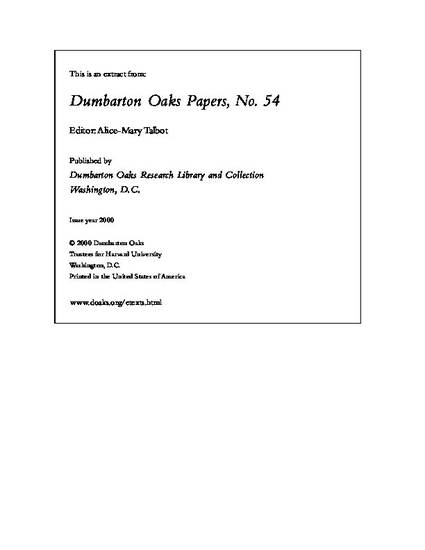
Much can be learned about the working methods of scribes and artists when they leave their product unfinished. This is true of the late thirteenth-century illustrated Gospel book, Paris, Bibliothe`que Nationale de France, cod. gr. 54. It was intended to be a deluxe, bilingual (Greek and Latin) manuscript featuring full-page evangelist portraits and an extensive narrative cycle of some fifty-two miniatures. In the end, only about half of its Latin text and twenty-two narrative miniatures were actually completed. Five other miniatures remain unfinished, and space was reserved in the text for twenty-five additional miniatures that were never even begun. No ornamental headpieces were painted (although space was reserved for them by the scribe), and the Latin text lacks many initials.3 These unfinished elements offer insight into the working methods of Paris 54's scribes and artists, and they allow us to recognize some degree of interaction between members of these two groups.

Copyright © 2000, Dumbarton Oaks Research Library and Collection, Trustees for Harvard University. Originally published in Dumbarton Oaks Papers 54, edited by Alice-Mary Talbot.